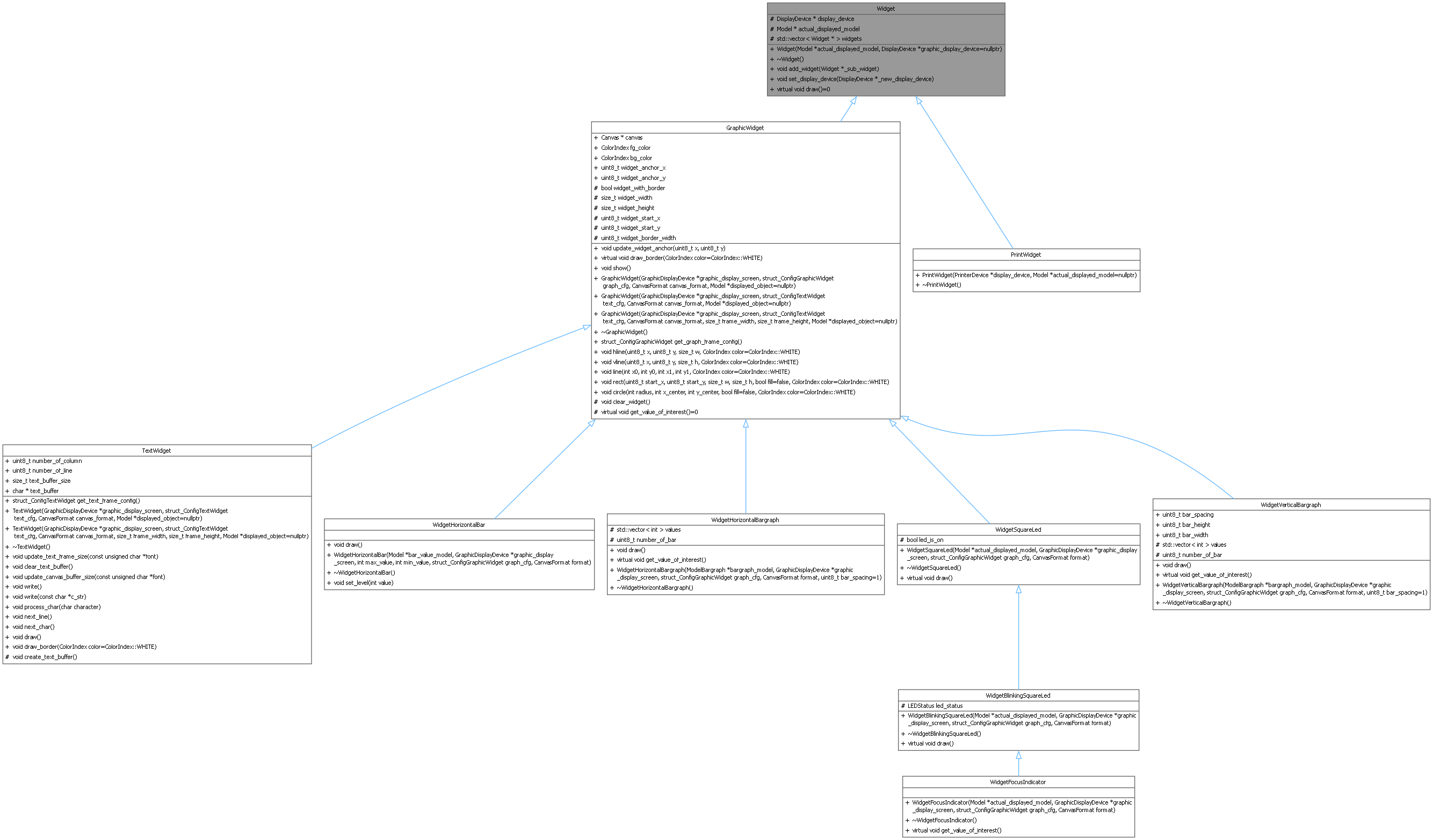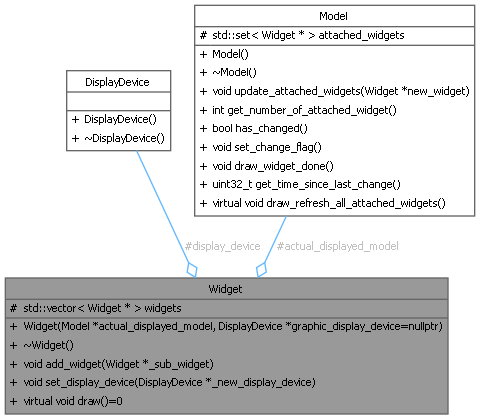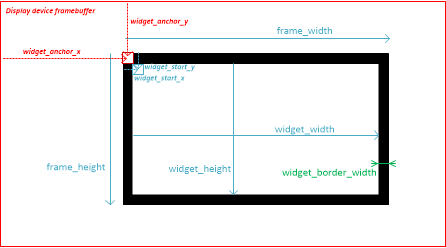A widget is a displayed object on a device screen. This is the base widget, it is derived as GraphicWidget with graphical capabilities and GraphicWidget is derived as TextWidget that adds textual capabilities. More...
#include <widget.h>


Public Member Functions | |
| Widget (Model *actual_displayed_model, DisplayDevice *display_device=nullptr) | |
| contructor for generic widget | |
| void | add_widget (Widget *_sub_widget) |
| add sub_widget to the current widget | |
| void | set_display_device (DisplayDevice *_new_display_device) |
| Set the display screen object. | |
| virtual void | draw ()=0 |
| a pure virtual member that is called to effectively draw the widget. | |
Public Attributes | |
| DisplayDevice * | display_device {nullptr} |
| the display device where the attached to the frame buffer | |
Protected Attributes | |
| Model * | actual_displayed_model {nullptr} |
| a pointer to the Model actually displayed by the widget | |
| std::vector< Widget * > | widgets |
| A widget can be composed by several widgets. | |
Detailed Description
A widget is a displayed object on a device screen. This is the base widget, it is derived as GraphicWidget with graphical capabilities and GraphicWidget is derived as TextWidget that adds textual capabilities.
USAGE: A widget is defined by a frame with width and height in pixel, and line and column of text if derived as TextualWidget. This frame is located within the display device screen at an anchor point (x,y).

- Note
- IMPORTANT NOTICE 1: The widget is only drawn if something has changed in the Model it represents. This allows to save drawing processing time. However there is a strong limitation : only the widget buffer is transfered to the device GDDRAM, based of its specific addressing scheme. As a result, if the widget is located such that the buffer is written across device pages, the contents of the overwritten pages is lost. This is why the widget height and the widget_anchor_y must be multiple of 8. Doing so the widget buffer bytes do not ovewrite pixel outside the widget border.
Constructor & Destructor Documentation
◆ Widget()
| Widget::Widget | ( | Model * | actual_displayed_model, |
| DisplayDevice * | display_device = nullptr ) |
contructor for generic widget
- Parameters
-
actual_displayed_model the displayed model of the widget display_device The display device on which the widget is drawn. This device can be "null".


Member Function Documentation
◆ add_widget()
| void Widget::add_widget | ( | Widget * | _sub_widget | ) |
add sub_widget to the current widget
- Parameters
-
_sub_widget

◆ draw()
|
pure virtual |
a pure virtual member that is called to effectively draw the widget.
- Note
- USAGE: This member function can be called by the draw_refresh_all_attached_widgets() method of the Model. Refer to the following diagram.
Implemented in TextWidget, WidgetBlinkingSquareLed, WidgetHorizontalBar, WidgetHorizontalBargraph, WidgetSquareLed, and WidgetVerticalBargraph.
◆ set_display_device()
| void Widget::set_display_device | ( | DisplayDevice * | _new_display_device | ) |
Set the display screen object.
- Parameters
-
_new_display_device
The documentation for this class was generated from the following files:
- widget.h
- widget.cpp